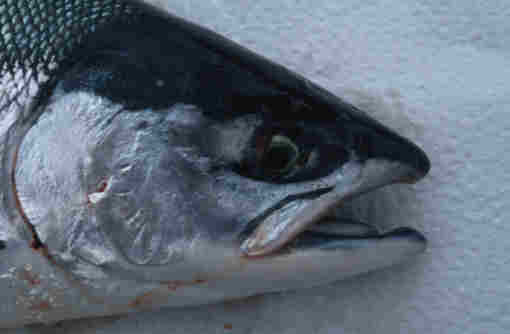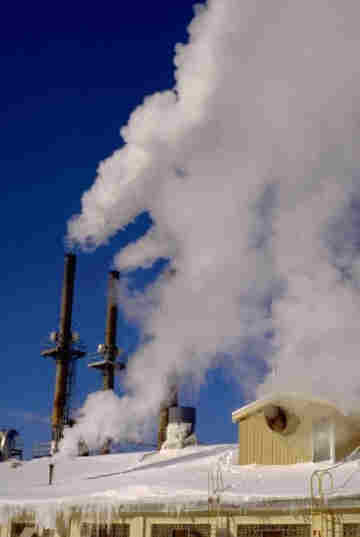|
Water temperature is an important factor for survival of aquatic
life. Very high and very low water temperature can kill many aquatic
plants and animals. The temperature can affect how an organism’s
internal mechanisms (metabolism) work. For example salmon and trout
prefer temperatures between 4.5° C (40°F) and 20° C (65°
F). Different stages of the growth of fish are susceptible ranges of
fish. In the summer when temperatures are high, juvenile fish actively
look for the cooler pools of water. A fish must pump water across its
gills to meet its need for oxygen. If the dissolved oxygen in water is
low, the gills must move faster to get enough oxygen for the fish to
survive.
Thermal pollution can occur when heated water is discharged into
cooler streams or rivers. This heated water generally is from power
plants or industrial processes. If the water is not cooled down before
entering into a stream or pond, it can cause organisms to die of
increased temperature.

Gills beat faster in warm water
|

Industrial plants can cause
thermal pollution
|